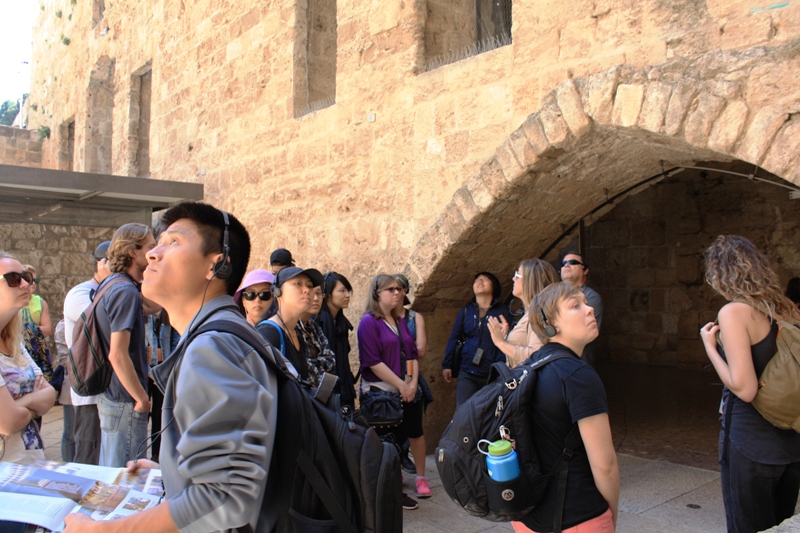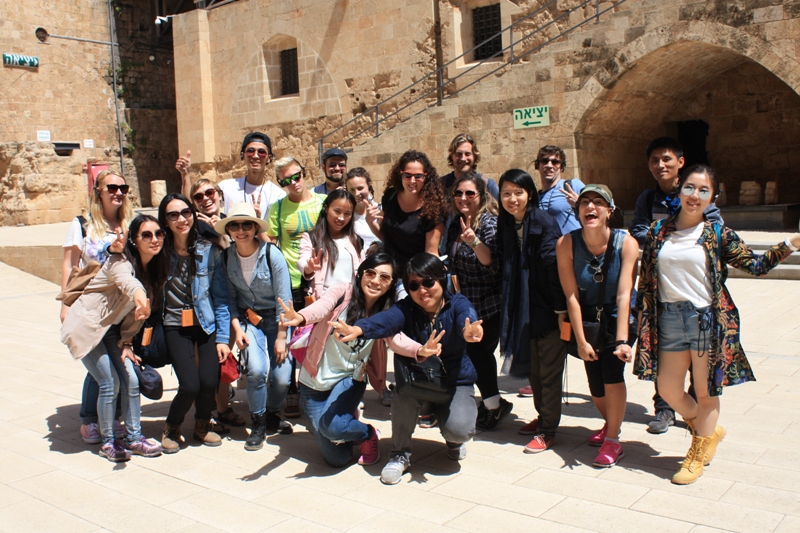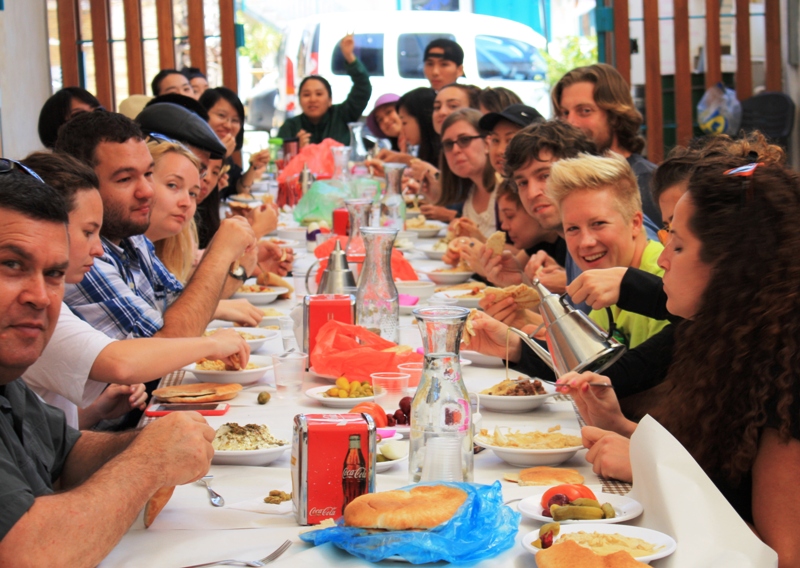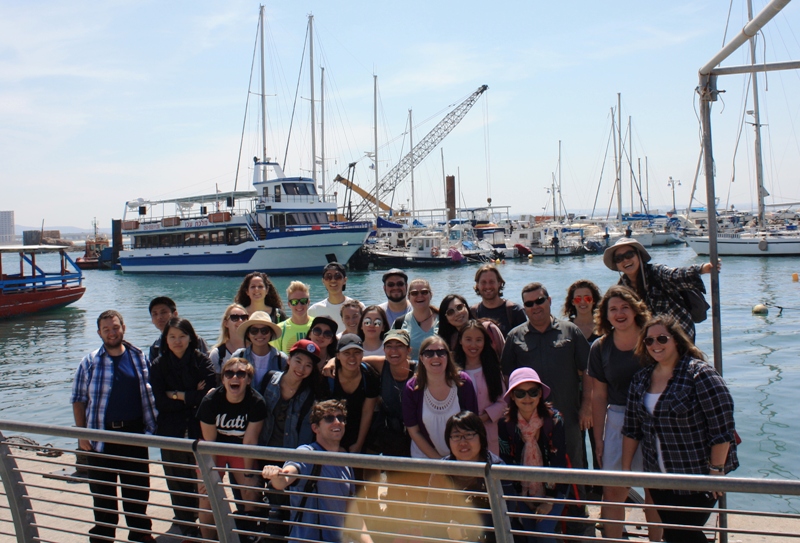Archaeology and Conservation: a Tour of Old Acre. / Benjamin Douglass
One of the latest archaeological tour conducted by the International MA program was a trip to the old city of Acre (also known as Akko). The Old City of Akko is a UNESCO world heritage site, and is a major hub for tourists.
The city, which has elements dating back to the Early Bronze Age, is built upon Crusader ruins from almost 1,000 years ago. The Crusaders, on their way to wrest control of Jerusalem and the Holy Land from the Muslims, built and fortified the port city of Akko and made it one of their most important cities. After the fall of Jerusalem Akko became the capital of their kingdom, until it was finally conquered and left in ruins by the Mamelukes. The old city incorporates many aspects and structures from the Crusader period, making it a unique city within Israel.
Conservation in the Old City of Akko
Our tour began at the International Conservation Center – Citta di Roma. The Center is a place for students, researchers, foreigners and native Israelis, to learn, practice, and experience historical and archaeological conservation through programs run by the Israel Antiquities Authority (IAA). In fact, in addition to being a first year student in the International MA Program in Ancient Israel Studies, I myself am also a graduate of the Savings the Stones program held at the International Conservation Center for 5 months twice a year.
The director of the International Conservation Center, Shelley Peleg, introduced us to the various challenges of conservation in Akko. She shared the story of the Conservation Center, its history and goals, as well as the story of Old Acre. The building in which the conservation center is located was first a mansion during the Ottoman Period before being sold and turned into a youth hostel. Finally the IAA purchased it as a test-case and school for practical conservation in Israel.

The International MA students viewing the Ottoman building of the International Conservation Center – Citta di Roma .
The Hospitaller Fortress
After our warm welcome in the Conservation Center, Shelley took us to the local IAA offices. Here we were given an introduction to the Crusader fortress, also known as The Hospitaller Fortress. The fortress today acts as a museum which holds important finds from Old Akko. The excavation of the fortress is an interesting tale. It was used by the British as a prison, where Zionist rebels where occasionally executed. Today there is a museum in the upper part of the fortress to commemorate Zionism in Palestine before the foundation of the state of Israel. The excavations of the Crusader ruins below threatened the stability of the structure, but after tremendous work and collaboration between different scientific fields, the crusader fortress was excavated without damaging the museum above.

Exploring the Hospitaller Fortress
We then visited the Hospitaller Fortress and saw with our own eyes the scale of the structure, as well as its vast underground network. After an introduction from Shelley we were free to wander around the complex on our own. Some of the more special locations were the Hall of Pillars, the Dining Hall, the underground tunnel, and the latrine.

Fun and games exploring the Hospitaller Fortress
From a True Acre Lunch to the Sea
After exploring the Crusader fortress, we were led by Prof. Oded Lipschits to one of his favorite restaurants in Akko for lunch. The lunch was delicious. We ate hummus and pita, labneh and mashawesha. After finishing our meal we walked through the shuk to the Templar Tunnel. The tunnel was constructed as a direct underground route from the crusader port to the Templar castle at the other end of the city. This castle has long crumbled away and is now sunken beneath the sea, but the tunnel was just recently discovered and opened to the public. We walked (and sometimes crawled) through the tunnel to the coast, where we picked up the bus and returned to Tel Aviv.

 Hummus lunch at the old city of Acre
Hummus lunch at the old city of Acre
The tour was a unique event for many of us in the program. Most often archaeologists don’t necessarily experience or understand the conservation work that goes into an ancient site after it has been excavated. Our tour with Shelley in Old Acre gave us another perspective on antiquities and the important and difficult role that conservation plays. Many thanks to her and Prof. Lipschits for arranging this tour for us!




